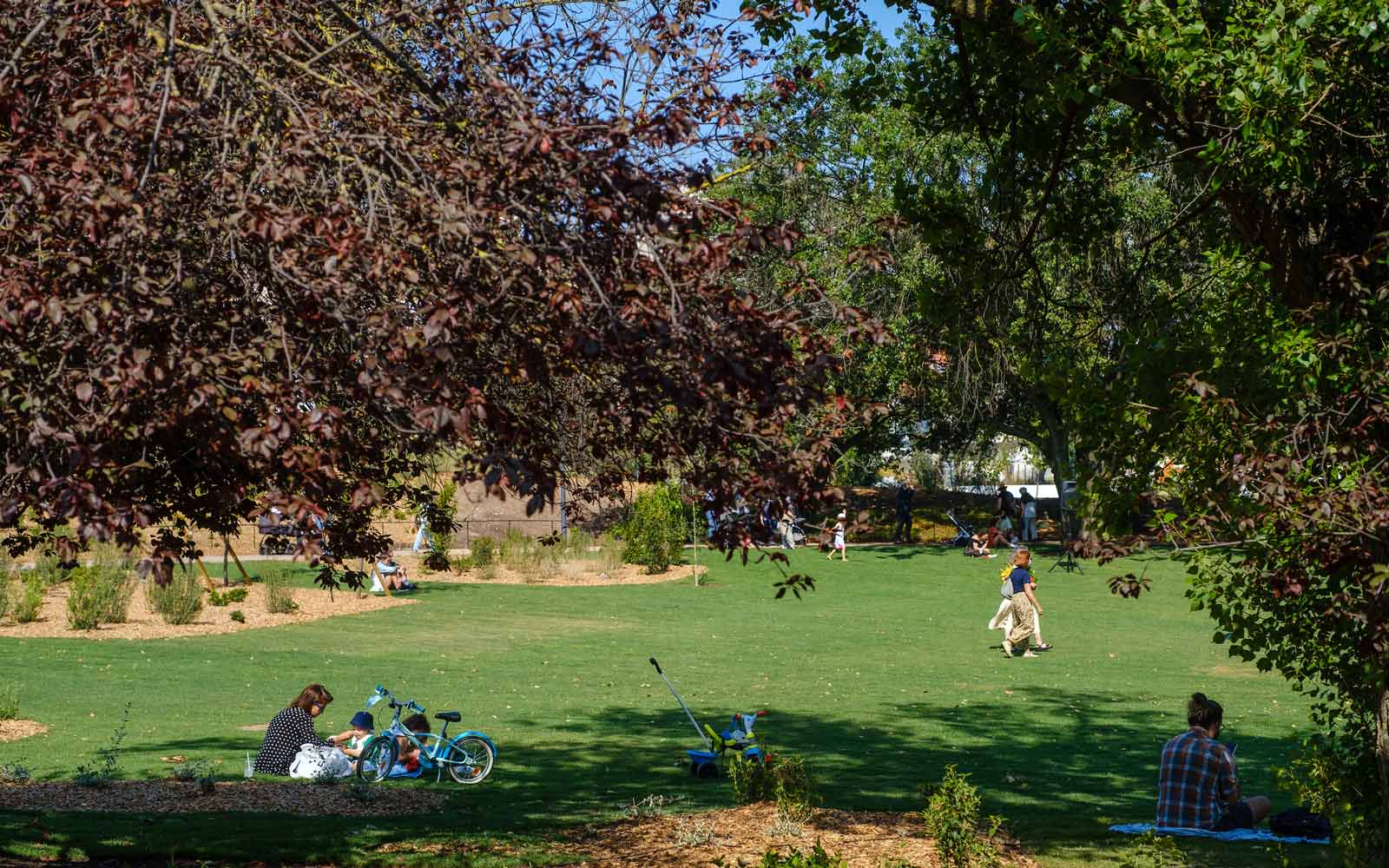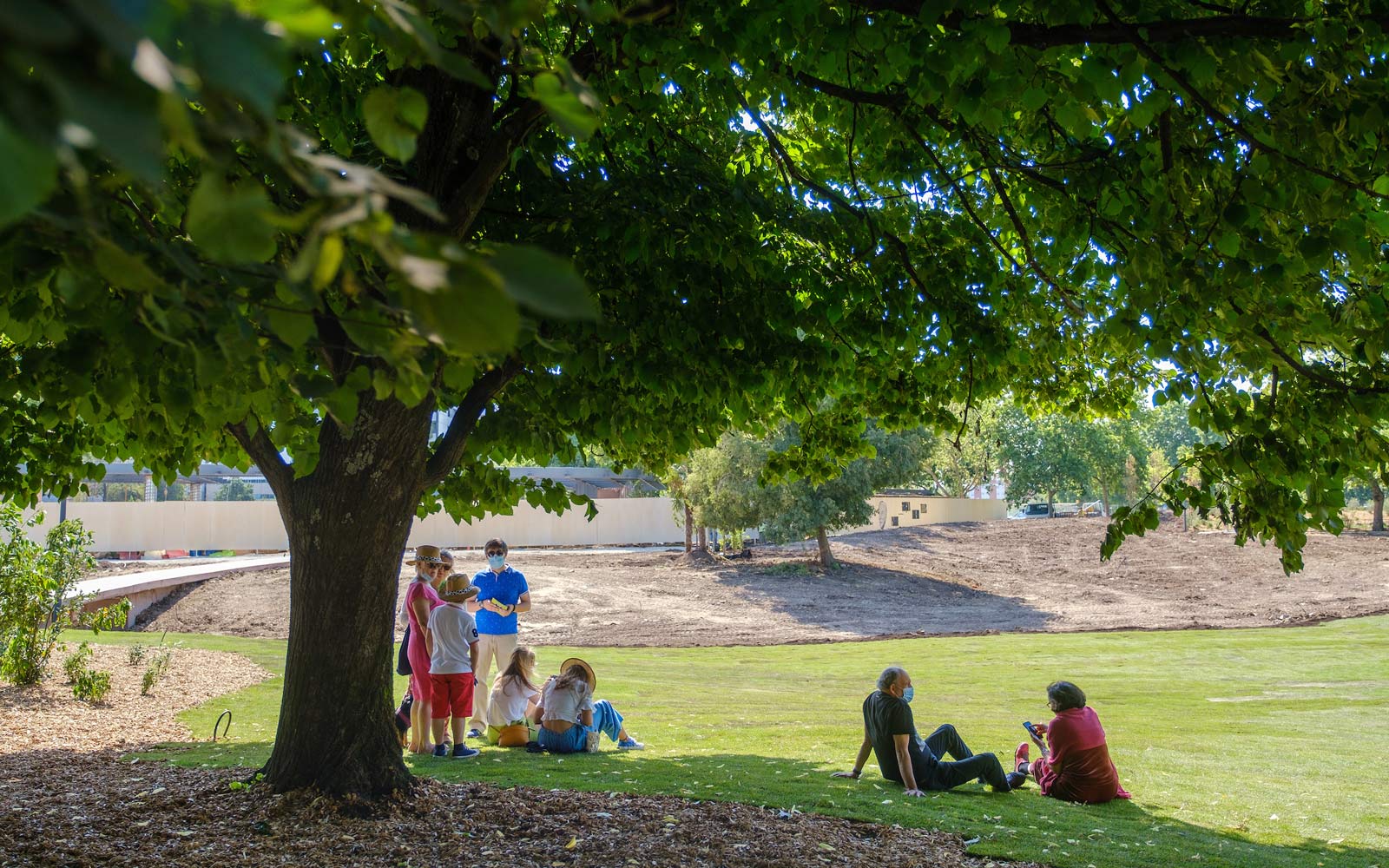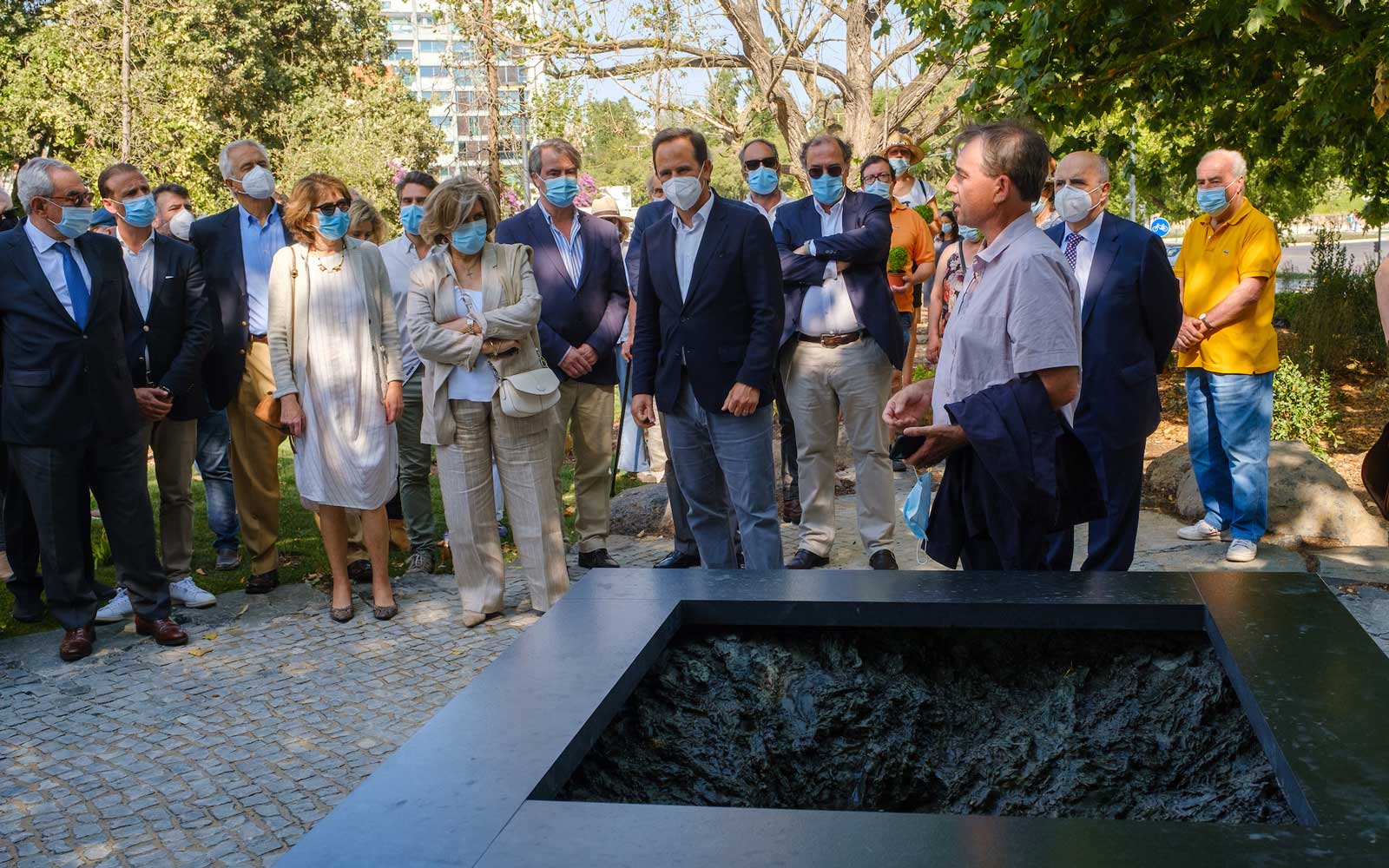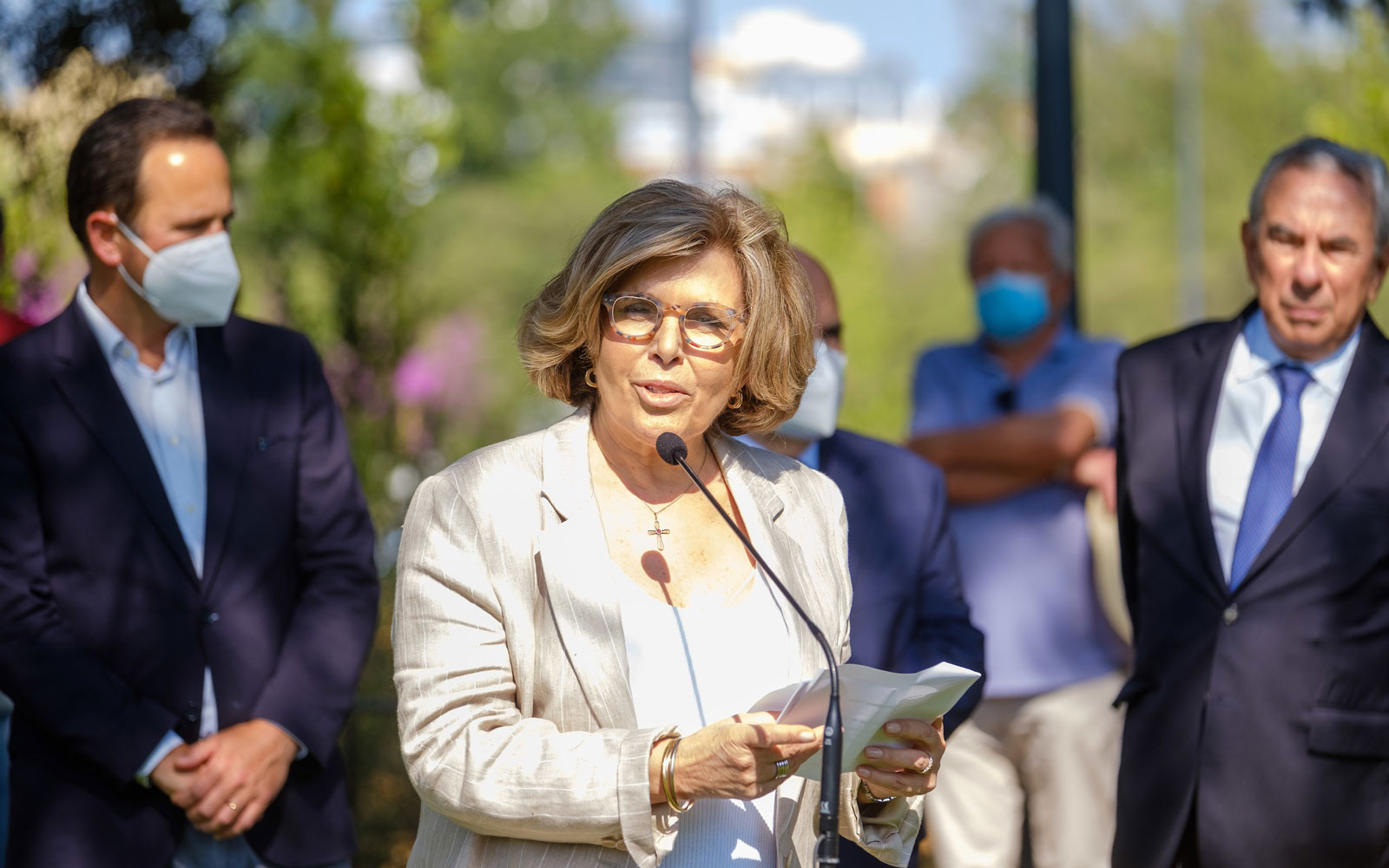The Gonçalo Ribeiro Telles Park opens

Within the scope of the Praça de Espanha redevelopment and refurbishment scheme, the Gonçalo Ribeiro Telles Park includes a total of almost 800 trees made up of 25 different species, over 50,000 different bushes and herbaceous plants and as well as 60 different types of bulbs (over 90% are indigenous and natural to the Lisbon region as always defended by Gonçalo Ribeiro Telles) coupled with zones for recreation and leisure, pedestrian footpaths, playparks, a cycleway, bike sharing points, a new metro entranceway as well as a new road layout and real estate developments.
In the Gonçalo Ribeiro Telles Park, as referenced by the President of Lisbon Municipal Council, Fernando Medina, during the opening ceremony on 13 June, “we applied a great deal of” the thinking of Gonçalo Ribeiro Telles, “to transform zones that were impermeable into permeable zones, taking advantage of the natural water basins to enable water to circulate and be able to appear once again.” The NPK team of landscape architects, winner of the international tender for requalifying the square, under the auspices of providing “continuity”, also made clear efforts to “apply” some of the plants that, back in the 1960s, Ribeiro Telles, with Vianna Barreto, architect of the Gulbenkian Garden, chose for the area located to the south of the new park.



Out of a fortunate coincidence, just as work was launched on the refurbishing of the Praça de Espanha square, the Foundation also “embarked on the Southern expansion of the Gulbenkian Garden and the renovation of its Centre of Modern Art, a joint project between the landscape architect Vladimir Djurovic and the architect Kengo Kuma”, as the Calouste Gulbenkian Foundation President, Isabel Mota, highlighted at the ceremony. “Vladimir Djurovic took inspiration from Ribeiro Teles, in the combination of the landscapes and the movement over the seasons of the year”, highlighted Isabel Mota, recalling how, according to this landscape architect, “the entire demand of any garden is its demand for movement. If this does not alter, if it fails to take advantage of the differences, it is not a garden. The creation of these dynamics is not for amateurs.”
“The requalification of Praça de Espanha and the future renovation of the Largo de São Sebastião da Pedreira square, in conjunction with the expanded Gulbenkian garden, shall together form a broad urbanistic presence, renovated to return the ‘green swathe’ to the city of Lisbon, as would be greatly to the pleasure, I am sure, of Gonçalo Ribeiro Telles and that shall certainly please all Lisboners”, Isabel Mota then added.


Among other such installations, the new Park may count on a piece by the Spanish artist Cristina Iglesias, winner of the National Arts Prize of Spain and the Architectural Award for 2020 made by the Royal Academy of Arts of London, a gift from the Calouste Gulbenkian Foundation “on behalf of culturally enriching the city, from the perspective of a culture of peace in which tradition and modernity, nature and the landscape merge together within a universalist spirit that also invokes the memory of the place”, the Foundation President concluded.
